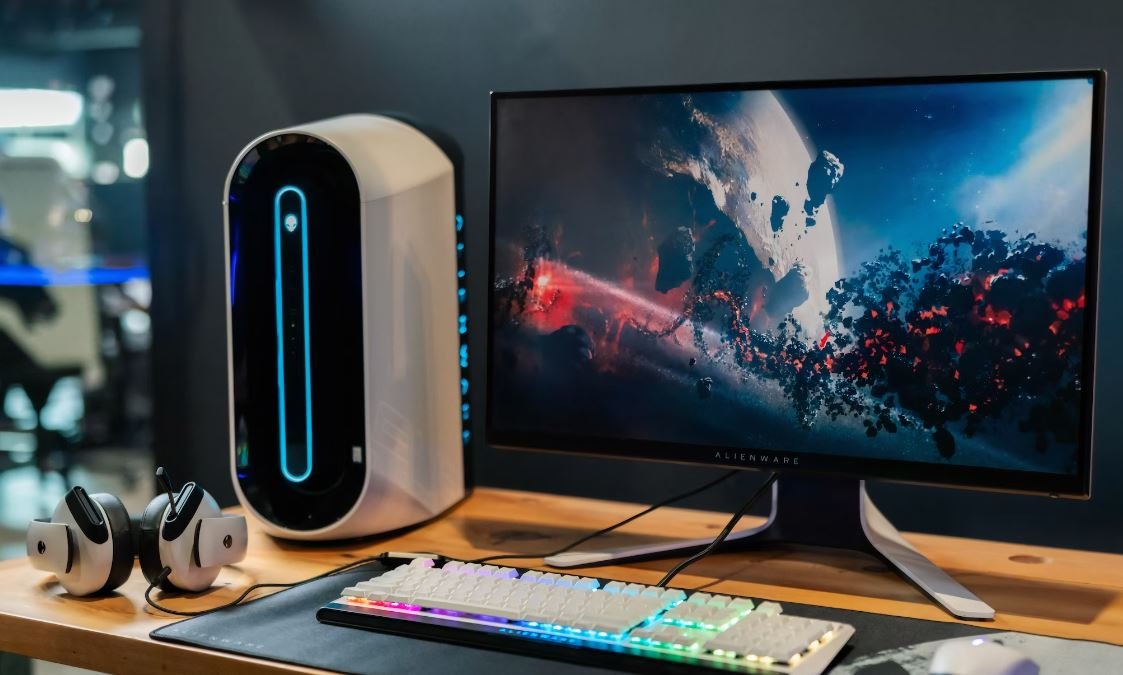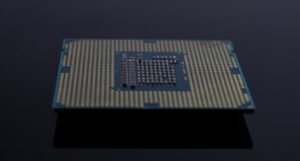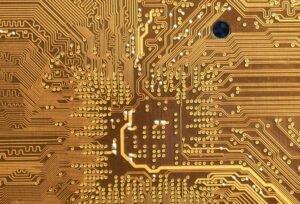What Is Deepfake App
Deepfake app is a technology that uses artificial intelligence (AI) to create highly convincing fake content, particularly in the form of doctored videos. This technology has gained attention and sparked concerns due to its potential misuse in spreading misinformation and manipulating media.
Key Takeaways:
- Deepfake app utilizes AI to create realistic fake videos.
- There are concerns over the potential misuse of deepfake technology.
- Deepfakes have implications for media manipulation and misinformation.
- Regulation and detection techniques are being developed to combat deepfake content.
**Deepfake** app is capable of replacing a person’s face in a video with someone else’s, often without detection. This AI-powered technology uses deep learning algorithms to analyze existing footage and generate highly convincing manipulated videos. *The level of realism achieved by deepfake apps is astonishing and can lead to significant consequences.*
Deepfake technology has raised several concerns and challenges regarding the spread of misinformation and the potential for harm. **Manipulated videos** created using deepfake apps can be used to deceive and mislead people, as they often appear authentic and difficult to distinguish from genuine content. This poses a threat to individuals, organizations, and society as a whole.
**Law enforcement** agencies and security experts have expressed concerns that deepfakes can be weaponized for criminal activities, such as blackmail, fraud, and election interference. The capability of creating realistic videos with fabricated content makes it easier for malicious actors to manipulate public opinion, incite violence, or damage someone’s reputation.
The Fight Against Deepfakes
In response to the growing threat of deepfake technology, various initiatives and countermeasures are being developed to detect and prevent the circulation of manipulated content. These include:
- Developing advanced **detection algorithms** that can analyze video characteristics and identify signs of manipulation.
- Implementing **regulatory measures** to address the creation and dissemination of deepfakes.
- Creating **digital watermarks** or signatures that can help verify the authenticity of videos.
- Empowering individuals with **media literacy** skills to recognize and critically evaluate suspicious or manipulated content.
Impact of Deepfakes
Deepfake technology has significant implications for society, politics, and the media landscape. It can undermine trust in information sources and lead to the spread of disinformation. Here are some noteworthy impacts:
| Impact | Description |
|---|---|
| Political Manipulation | Deepfakes can be used to manipulate political speeches and events, potentially influencing election outcomes. |
| Reputation Damage | Deepfakes can damage individuals’ reputations by making them appear in compromising or false situations. |
*The widespread adoption of deepfakes could fundamentally disrupt our trust in visual media and alter the way we perceive reality.*
The Future of Deepfake App
As technology continues to advance, deepfake apps are likely to become more sophisticated and accessible. The ongoing battle against deepfakes requires a combination of technological advancements, policy interventions, and media literacy efforts to ensure the integrity of digital content. It is crucial for individuals to remain vigilant, question the authenticity of videos, and rely on trusted sources of information.
| Fact | Statistic |
|---|---|
| Deepfake videos created in 2021 | Over 300,000 |
| Percentage of people deceived by deepfake videos | Approximately 45% |
It is important for society as a whole to address the challenges posed by deepfake technology and actively work towards building a resilient and trustworthy information ecosystem.

Common Misconceptions
Misconception 1: All Deepfake Apps Are Used for Malicious Purposes
- Not all Deepfake apps are built with malicious intent.
- Some Deepfake apps have been created for entertainment purposes, such as creating funny videos.
- There are also Deepfake apps that serve educational or research purposes, helping to highlight the potential risks and promote awareness about this technology.
Misconception 2: Deepfake Apps Can Perfectly Replicate Real People
- Deepfake technology is constantly evolving, but it is not yet capable of producing flawless replicas of real people.
- There are often subtle visual artifacts or imperfections that can be spotted by trained observers.
- While Deepfake technology can produce convincing results, it still has limitations in replicating complex facial expressions and other intricate details.
Misconception 3: Deepfake Apps Are Easily Accessible by Anyone
- Creating high-quality Deepfake videos requires advanced technical skills and access to powerful computing resources.
- Deepfake apps are not typically readily available to the average person as they often require specialized knowledge to operate.
- The accessibility to Deepfake apps is mostly limited to individuals or groups with a deep understanding of the underlying algorithms and technologies.
Misconception 4: Deepfake Apps Are Only Used to Create Fake Celebrity Pornography
- While there have been instances of Deepfake technology being used for creating explicit content, it is important to note that this is not the sole purpose of Deepfake apps.
- Deepfake technology has increasingly found uses in other fields, such as entertainment, art, and even political commentary.
- It is crucial to be cautious of generalizing the capabilities and uses of Deepfake apps solely based on a few specific cases.
Misconception 5: Deepfake Apps Are Impossible to Detect
- While it is true that the detection of Deepfake videos can be challenging, it is not necessarily impossible.
- Researchers and organizations are actively developing methods and tools to detect Deepfake content.
- Advanced algorithms and machine learning techniques are being employed to identify inconsistencies and anomalies in Deepfake videos.

What Is Deepfake App
Deepfake technology has become a growing concern due to its potential to manipulate digital content, particularly in the creation of fake videos. Understanding the various aspects of this technology is crucial in order to comprehend its implications. The following tables highlight key points, data, and elements related to deepfake apps.
Rise of Deepfake Apps
As deepfake technology continues to develop, numerous applications have emerged that utilize this technology for various purposes. The table below provides an overview of some popular deepfake apps available in the market.
| Deepfake App | Purpose | Platforms |
|---|---|---|
| FakeApp | Creating realistic face swaps | Windows, macOS |
| DeepFaceLab | Generating high-quality deepfakes | Windows |
| Reface | Replacing faces in videos with celebrities | iOS, Android |
| Zao | Superimposing user’s face into movie scenes | iOS, Android |
Ethical Concerns
While deepfake technology has its share of creative applications, it also raises several ethical concerns. The table below presents some of the ethical issues associated with the use of deepfake apps.
| Ethical Concern | Description |
|---|---|
| Misinformation | Deepfakes can spread false narratives or disinformation. |
| Non-consensual Use | People’s faces can be edited into explicit or compromising content without their consent. |
| Privacy Invasion | Deepfake technology can invade personal privacy by creating manipulative content. |
| Impact on Trust | Deepfakes can erode trust in media and lead to skepticism of genuine content. |
Deepfake Detection Techniques
To combat the challenges associated with deepfake content, researchers have developed various detection techniques. The table below presents different methods used to identify deepfake videos.
| Detection Technique | Description |
|---|---|
| Visual Artifacts Analysis | Examining discrepancies and inconsistencies in the video. |
| Audio Analysis | Identifying mismatches or alterations in the audio track. |
| Face Manipulation Detection | Analyzing facial features for signs of manipulation. |
| Machine Learning Algorithms | Using advanced algorithms to identify patterns in deepfake videos. |
Deepfake Impact on Politics
The emergence of deepfake technology has significant implications for political landscapes worldwide. The table below highlights a few notable instances where deepfakes played a role in politics.
| Political Scenario | Deepfake’s Impact |
|---|---|
| Election Campaigns | Candidates’ speeches can be manipulated to spread false information or controversy. |
| Public Perception | Deepfakes can influence public opinion and sway political narratives. |
| International Relations | Deepfakes can be used to fabricate controversial statements by political leaders. |
Deepfake in Entertainment Industry
The entertainment industry has also experienced the impact of deepfake technology. The following table highlights the utilization of deepfakes in movies and television.
| Entertainment Application | Description |
|---|---|
| Digital Acting | Deepfake technology allows deceased actors to appear in new movies. |
| Youthful Transformations | Actors’ faces can be digitally altered to appear younger in certain scenes. |
| Cameo Appearances | Deepfakes enable celebrity cameos in movies, enhancing entertainment value. |
Deepfake in Journalism
Journalism and media outlets face significant challenges in detecting and combating deepfake content. The table below explores the implications of deepfakes on journalistic integrity.
| Journalistic Challenge | Impact on Reporting |
|---|---|
| Fake News | Deepfakes can be used to spread fabricated news stories and generate misinformation. |
| Credibility Crisis | Deepfake videos can undermine the credibility of reputable news sources. |
| Manipulating Interviews | Interviews can be manipulated to distort the expressed viewpoints of individuals. |
Deepfake Regulations and Legislation
Due to the potential harms associated with deepfake content, policymakers have been exploring regulations to address these concerns. The table below showcases countries and their initiatives regarding deepfake legislation.
| Country | Legislation |
|---|---|
| United States | Several states have enacted laws addressing deepfake content and its consequences. |
| South Korea | Introduced legislation criminalizing the creation and distribution of deepfakes without consent. |
| India | Proposed a draft bill to regulate deepfake technology and its potential misuse. |
Deepfake and Cybersecurity
The rise of deepfake technology has significant implications for cybersecurity, as it can be used in various malicious ways. The following table explores the cybersecurity vulnerabilities associated with deepfakes.
| Cybersecurity Vulnerability | Description |
|---|---|
| Social Engineering Attacks | Deepfakes can be used to deceive individuals into revealing sensitive information. |
| Identity Fraud | Attackers can use deepfakes to impersonate individuals and perform fraudulent activities. |
| Exploiting Trust | Deepfakes can persuade individuals to take actions that compromise their security. |
Deepfake technology presents both incredible opportunities and significant challenges. While it can revolutionize entertainment and digital content creation, it also carries substantial ethical, political, journalistic, and cybersecurity risks. As the technology evolves, continued research, regulation, and public awareness are vital to mitigate the potential harm and ensure responsible use of this powerful tool.
Frequently Asked Questions
What is a deepfake?
A deepfake is an artificial intelligence-powered technique used to manipulate or alter digital content, typically involving the creation of realistic fake videos or images. It combines generative neural networks and machine learning algorithms to create convincing visual and audio simulations of people that may not exist or have not performed the actions shown.
How do deepfake apps work?
Deepfake apps utilize deep learning algorithms and artificial neural networks to generate highly realistic and plausible videos or images. These apps employ a two-step process: training and generation. During the training phase, the algorithm is fed with large amounts of data to learn patterns and features specific to a person’s face or voice. In the generation phase, the app uses the learned information to manipulate or morph existing content into a new creation.
Are there legitimate uses for deepfake technology?
While deepfake technology is often associated with malicious or deceptive purposes, it has potential legitimate applications. For instance, it can be used in the entertainment industry for special effects or creating lifelike CGI characters. Additionally, it can aid in forensic analysis, helping to enhance or reconstruct images or videos for investigative purposes.
What are the risks associated with deepfake apps?
Deepfake apps pose several risks. They can be used to spread misinformation, manipulate public opinion, and defame individuals by making them appear involved in situations they were not. These apps can also facilitate harassment and cyberbullying by creating fake explicit content. Furthermore, deepfakes can undermine trust in visual media and have serious implications for privacy and targeted online attacks.
How can deepfake apps be identified or detected?
Detecting deepfake apps can be challenging as they continue to improve in sophistication. However, some methods currently used for detection include analyzing inconsistencies in facial expressions, mismatched eye movements, unusual blinking patterns, and artifacts or distortions in the video or image. Various researchers and organizations are actively developing advanced algorithms and tools to combat deepfakes.
Are there any legal implications related to deepfake apps?
Deepfake apps can raise legal concerns, especially if they are used for malicious purposes such as defamation, harassment, or spreading fake news. In many jurisdictions, creating and distributing deepfakes with the intention to deceive can be illegal. Laws regarding deepfakes may vary, so it is advisable to consult the specific legislation in your region to understand the legal implications.
What can individuals do to protect themselves from deepfakes?
To protect themselves from potential harm caused by deepfakes, individuals can take several precautions. These include being cautious about sharing personal media content, verifying the sources of information, fact-checking videos or images before believing or sharing them, and staying updated on emerging technologies and countermeasures against deepfakes.
Can deepfake apps be used for positive purposes?
While deepfake apps are often associated with negative implications, they can be used for positive purposes. Some applications use deepfake technology to create educational content, such as historical reenactments or language learning. Deepfake apps can also be used for artistic expression or to generate new content that sparks creativity and innovation.
How can deepfake detection technology be improved?
Improving deepfake detection technology requires continuous research and development efforts. Some approaches involve training deep learning models to identify specific markers or artifacts associated with deepfakes, such as subtle skin texture inconsistencies or unnatural movements. Collaboration between technology companies, researchers, and policymakers is essential to advance detection techniques and stay ahead of evolving deepfake technologies.
What are the ethical considerations surrounding deepfake apps?
Deepfake technology raises several ethical concerns. The potential for misuse, privacy violations, and harm to individuals’ reputations make it necessary to establish ethical guidelines for the development and use of deepfake apps. Ethical considerations include the need for informed consent when using someone’s likeness, combating the spread of harmful content, and ensuring transparency about the use of deepfake technology.




